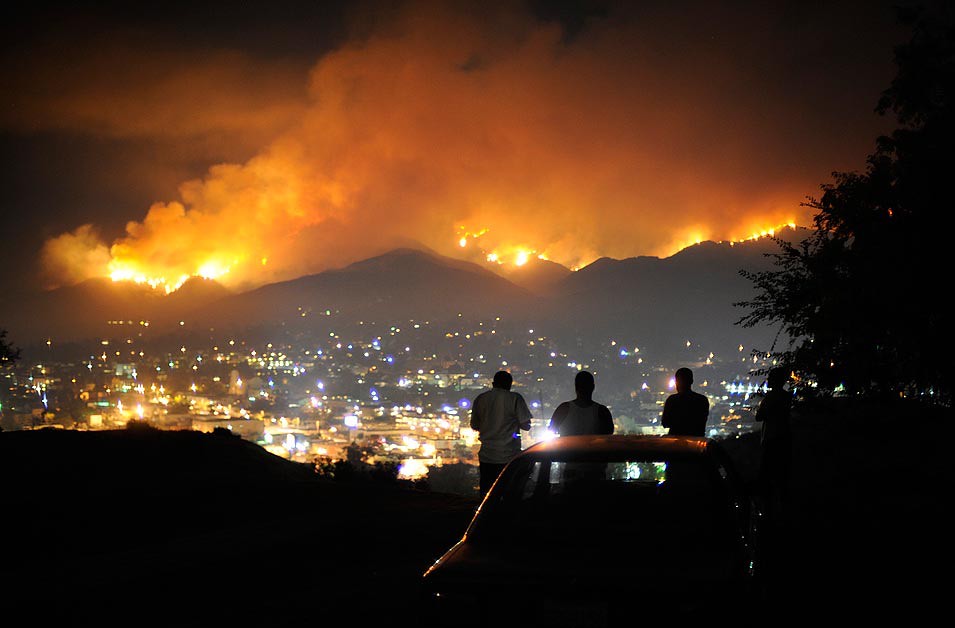
As California braces for upcoming high wind events, PG&E (Pacific Gas and Electric Company) has issued warnings of potential power shutoffs in Central California to mitigate wildfire risks. These Public Safety Power Shutoffs (PSPS) are a preventative measure designed to reduce the likelihood of power lines sparking fires in dry, windy conditions. While the move may protect communities from immediate fire dangers, it highlights the ongoing vulnerabilities of overhead power systems and the urgent need to pursue long-term solutions like undergrounding utility lines.
The Role of Underground Utilities in Fire Prevention
Overhead power lines are particularly susceptible to high winds, with falling branches and other debris often leading to sparks that can ignite wildfires in California’s dry, fire-prone landscapes. Undergrounding utility lines would eliminate this risk, as the lines are protected from weather conditions and other environmental factors that typically cause power outages and fire hazards.
In addition to reducing fire risks, underground utilities offer greater reliability during severe weather events. By burying power lines, communities could avoid the disruptive power outages that often accompany high winds. This solution offers a critical opportunity to prevent not only wildfires but also the widespread inconvenience and economic impact caused by power loss.
Recent Wildfires Caused by Downed Power Lines
Recent devastating wildfires underscore the critical need for utility undergrounding. In California, multiple fires have been traced back to downed power lines, including the 2018 Camp Fire—the deadliest wildfire in the state’s history—started by PG&E’s overhead equipment. Most recently, the Lahaina Fire in Maui, which decimated the historic town and claimed many lives, was ignited by downed power lines. These tragedies highlight the immense destruction that can occur when overhead utilities fail under extreme weather conditions.
The common factor in these disasters is the vulnerability of overhead lines to wind, debris, and other environmental hazards. As climate change intensifies these risks, finding ways to minimize such threats is imperative. Undergrounding power lines provides a tangible solution to these recurring tragedies by removing the direct cause of many wildfires.
PG&E’s Undergrounding Program
In an effort to combat the growing wildfire risks, PG&E has launched a comprehensive undergrounding program, receiving approval from the California Public Utilities Commission (CPUC) to continue undergrounding utility lines across high-risk areas. The program is designed to significantly reduce the likelihood of utility-related wildfires. According to research, undergrounding is 99% effective in preventing fires compared to other methods like PSPS, which offer only temporary relief. By burying power lines, PG&E is making a long-term investment in safety and reliability that will help protect communities from fire risks while reducing the need for disruptive power shutoffs during severe weather conditions.
The Need for Nationwide Undergrounding Efforts
The benefits of underground utilities extend far beyond wildfire prevention. As climate change drives more extreme weather events across the country, burying power lines can provide enhanced protection against hurricanes, ice storms, and other natural disasters. For instance, hurricanes in the Southeast and Gulf Coast regions frequently result in downed power lines, causing widespread outages and delays in recovery. Undergrounding transmission and distribution lines in these regions would bolster community resilience and reduce the time it takes to restore power after storms.
While the cost of undergrounding power lines is often cited as a barrier, the long-term benefits in terms of fire prevention, improved safety, and reduced power outages far outweigh the upfront investment. With the increasing frequency of wildfires and other extreme weather events, proactive investment in underground utilities is an essential strategy for mitigating future risks.
Conclusion
PG&E’s potential power shutoffs during upcoming high wind events are a stark reminder of the limitations of overhead power lines in vulnerable areas. While temporary shutoffs may prevent fires in the short term, the real solution lies in more widespread adoption of underground utilities. Recent wildfires in California and Maui, sparked by downed power lines, illustrate the devastating consequences of outdated infrastructure. Expanding undergrounding efforts nationwide is essential to protecting communities from the growing risks posed by wildfires and other natural disasters. As we confront the realities of climate change, investing in resilient infrastructure like underground power lines will be essential to safeguarding both people and landscapes from future catastrophes.